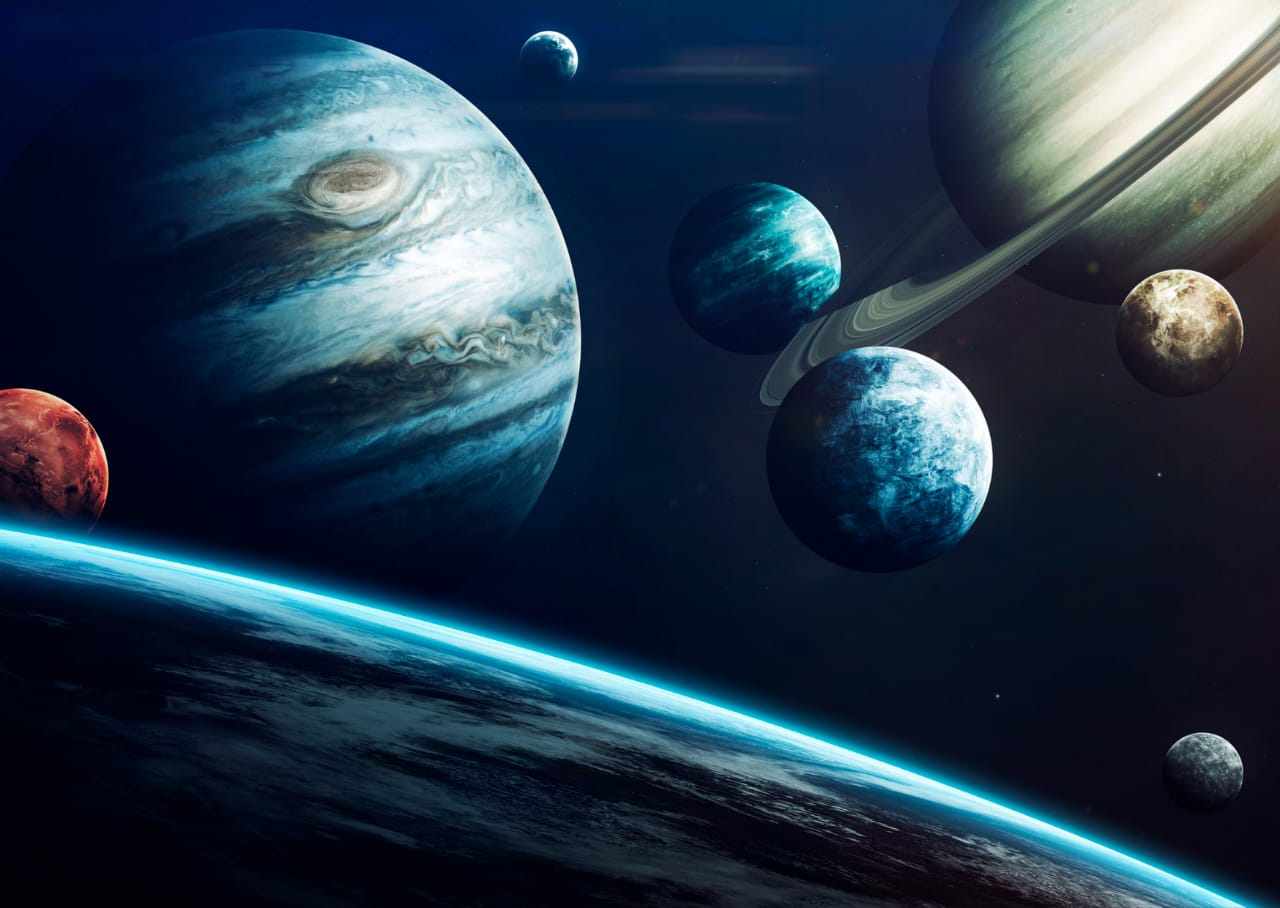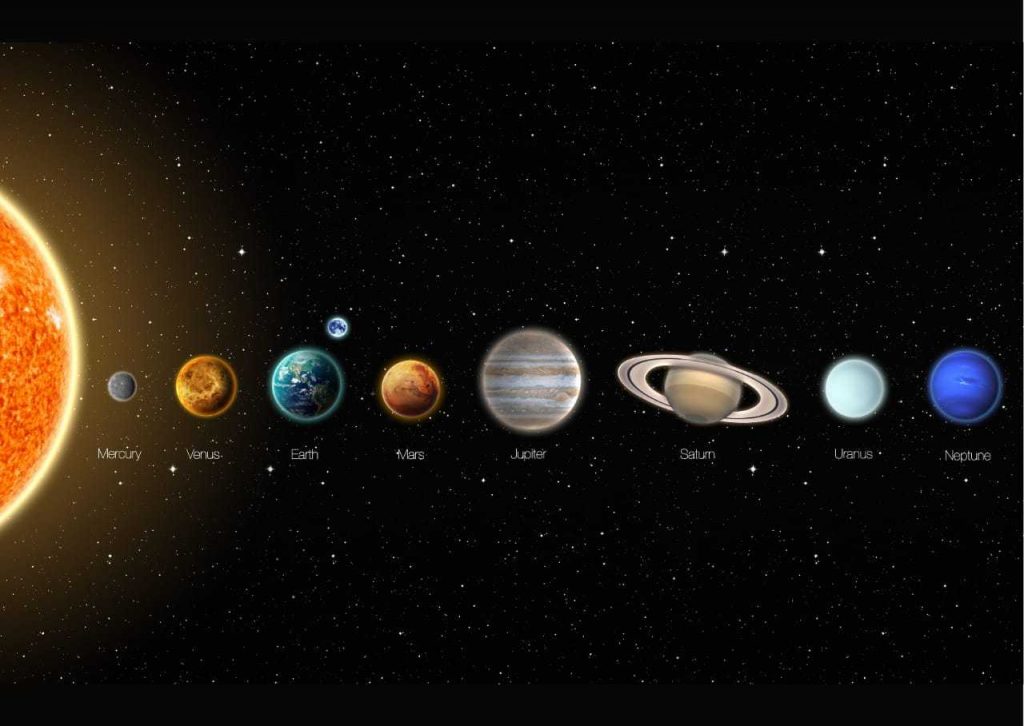Our solar system is not just the Sun, Earth and the Moon, it contains many, many other celestial objects, including other planets, their moons, asteroids, comets, dwarf planets, etc.
The system works in an orderly fashion exhibiting repeating and fairly predictable patterns of motion around the sun at the center, and their own rotations too, in the case of the planets. Here we have prepared a comprehensive chart showing various statistics about each of the planets of our solar system.
Distance from the Sun
All planets revolve around the Sun in elliptical orbits. The given table shows the average distance between the planets and the Sun, measured in AU (astronomical units).
| Sl.no. | Name of Planet | Closest(AU) | Average(AU) | Farthest(AU) |
| 1 | Mercury | 0.307 | 0.387 | 0.466 |
| 2 | Venus | 0.718 | 0.722 | 0.728 |
| 3 | Earth | 0.98 | 1 | 1.01 |
| 4 | Mars | 1.38 | 1.52 | 1.66 |
| 5 | Jupiter | 4.95 | 5.20 | 5.46 |
| 6 | Saturn | 9.05 | 9.58 | 10.12 |
| 7 | Uranus | 18.4 | 19.2 | 20.1 |
| 8 | Neptune | 29.8 | 30.1 | 30.4 |
| 9 | Pluto | 29.7 | 39.5 | 49.3 |
Diameters and Rotational period of the celestial objects
| Sl.no. | Name of Planet | Diameter (km) | Rotational Period(Hrs) |
| 1 | The Sun | 1.4M | 648 |
| 2 | Mercury | 4,879 | 1407.6 |
| 3 | Venus | 12,104 | -5832 |
| 4 | Earth | 12,756 | 23.9 |
| 5 | Mars | 6,792 | 24.6 |
| 6 | Jupiter | 140,982 | 9.9 |
| 7 | Saturn | 120,536 | 10.7 |
| 8 | Uranus | 51,118 | -17.2 |
| 9 | Neptune | 49,528 | 16.1 |
| 10 | Pluto | 2,376 | -153.3 |
| 11 | The Moon | 3,475 | 665.7 |
Here, larger number signifies longer day and night cycles, while the negative sign indicates that the rotation is in the opposite direction of that of the Earth.
Read: What would happen to the solar system if the Sun disappeared?
Some other interesting facts on our solar system
- The sun is 109 times the diameter of Earth and contains 99.8% of the entire mass of the solar system. Roughly 1.3 million Earths can fit inside the sun if it were a hollow ball.
- Compared with other stars, the size of the sun is relatively small and it’s just one of hundreds of billions of stars in our home galaxy, the Milky Way.
- The sun is between 25,000 and 30,000 light-years from the supermassive black hole that forms the center of our galaxy.
- Earth is located in what is known as the “Goldilocks Zone,” orbiting at the ideal distance from the sun to have liquid water — if it were any closer, the water would evaporate into a gas and if Earth were farther away, the water would freeze.
- Jupiter is a gas giant, mainly made up of helium and hydrogen. It is twice as big as all of the other planets in the solar system combined, and yet it also has the shortest day of any planet, taking 10 hours to turn about its axis.
- Beyond the ice giant Neptune, the solar system extends to the Kuiper Belt and Oort Cloud. The belt’s most famous inhabitant is the dwarf planet Pluto, but it also contains trillions of frozen objects, many of which are remnants of our early solar system
- Pluto, once the ninth planet in the solar system was demoted to dwarf planet status in 2006 because it failed on the third point of the definition for a planet: It had not cleared its neighbourhood of space objects.

